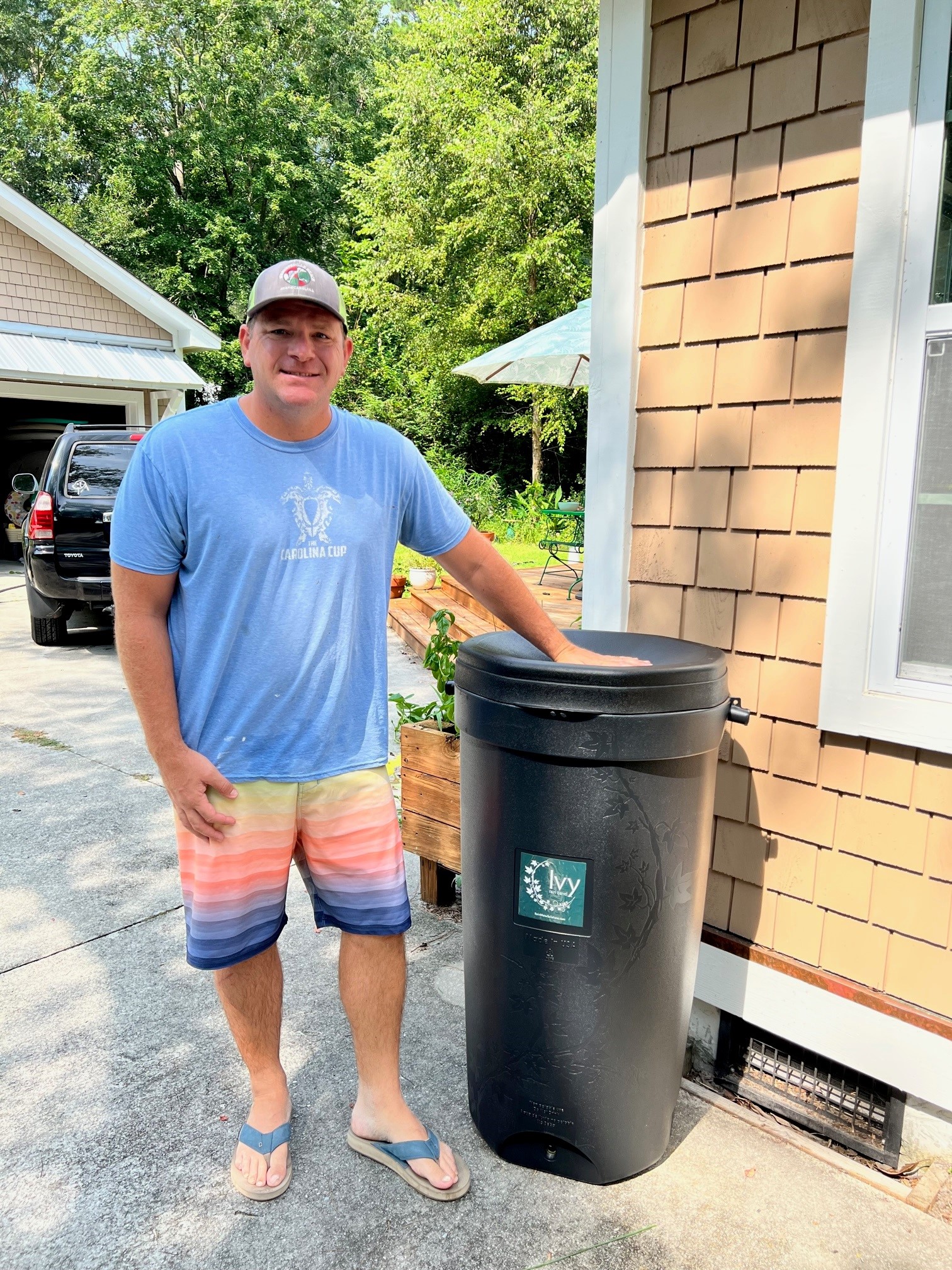 A barrel or tank that collects and stores rainwater.
A barrel or tank that collects and stores rainwater.
Why?
Rain barrels and cisterns(PDF, 415KB) catch rain from roofs and gutters, which prevents pollutants from washing into local waterways. Rain barrels typically hold up to 100 gallons. Cisterns are essentially larger versions of rain barrels. Sizes for cisterns can range from 100 to thousands of gallons!
How?
First stop, shopping! Head to your local rain barrel sale or home improvement store to pick up a rain barrel and a gutter diverter. Second, pick a base for your barrel to stand on. The height helps increase your water pressure. Third, measure the height of your barrel, taking into account the base and the diverter. Fourth, cut your gutter. Fifth, direct your overflow away from your foundation. Finally, attach a hose and enjoy watering your garden or washing your car with reusable water. If you have a cistern, you can even consider placing it underground if you have limited space on your property.
If you have property near Bradley Creek or Hewletts Creek, our HOWBMP program will fully fund and install larger cisterns on your property. Sign up for a site visit to see if you qualify.
Optional: Consider painting your barrel for a fun touch.
Benefits
- Provides a steady, free source of nutrient and mineral-rich water for your garden or lawn
- Can decrease flooding
- Shows your neighbors that you're progressive and environmentally conscious
- Decreases polluted runoff and protects our waterways
Videos